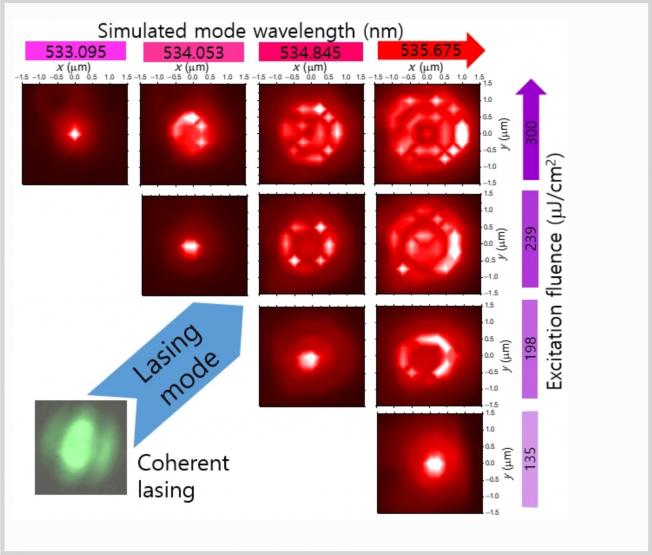High-temperature performance of non-polar (11–20) InGaN quantum dots grown by a quasi-two-temperature method
Physica Status Solidi B: Basic Solid State Physics Wiley 254:8 (2017) 1600724
Abstract:
Non-polar (11–20) a-plane InGaN quantum dots (QDs) are one of the strongest candidates to achieve on-chip applications of polarised single photon sources, which require a minimum operation temperature of ∼200 K under thermoelectrically cooled conditions. In order to further improve the material quality and optical properties of a-plane InGaN QDs, a quasi-two-temperature (Q2T) method has been developed, producing much smoother underlying InGaN quantum well than the previous modified droplet epitaxy (MDE) method. In this work, we compare the emission features of QDs grown by these two methods at temperatures up to 200 K. Both fabrications methods are shown to be able to produce QDs emitting around the thermoelectric cooling barrier. The sample fabricated by the new Q2T method demonstrates more stable operation, with an order of magnitude higher intensity at 200 K comparing to the comparable QDs grown by MDE. A detailed discussion of the possible mechanisms that result in this advantage of slower thermal quenching is presented. The use of this alternative fabrication method hence promises more reliable operation at temperatures even higher than the thermoelectric cooling threshold, and facilitates the on-going development of high temperature polarised single photon sources based on a-plane InGaN QDs.Optical polarization in mono and bilayer MoS 2
Current Applied Physics Elsevier 17:9 (2017) 1153-1157
Abstract:
Optical anisotropy in monolayer- and bilayer-MoS 2 was investigated by polarization resolved photoluminescence measurements. The photoluminescence of monolayer-MoS 2 is found to be partially polarized at 4.2 K and maintains this polarization characteristic up to room temperature, while the photoluminescence of bilayer-MoS 2 shows no obvious polarization. This polarization anisotropy is due to strain effects at the interface between the MoS 2 layer and the SiO 2 substrate, causing symmetry breaking of the MoS 2 charge distribution. Calculations using density functional theory of the electron density distribution of the monolayer- and bilayer-MoS 2 in the in-plane direction are also presented, giving support to our qualitative analysis.Interplay between many body effects and Coulomb screening in the optical bandgap of atomically thin MoS2
Nanoscale Royal Society of Chemistry 9:30 (2017) 10647-10652
Abstract:
Due to its unique layer-number dependent electronic band structure and strong excitonic features, atomically thin MoS2 is an ideal 2D system where intriguing photoexcited-carrier-induced phenomena can be detected in excitonic luminescence. We perform micro-photoluminescence (PL) measurements and observe that the PL peak redshifts nonlinearly in mono- and bi-layer MoS2 as the excitation power is increased. The excited carrier-induced optical bandgap shrinkage is found to be proportional to n4/3, where n is the optically-induced free carrier density. The large exponent value of 4/3 is explicitly distinguished from a typical value of 1/3 in various semiconductor quantum well systems. The peculiar n4/3 dependent optical bandgap redshift may be due to the interplay between bandgap renormalization and reduced exciton binding energy.Two-dimensional excitonic photoluminescence in graphene on a Cu surface
ACS Nano American Chemical Society 11:3 (2017) 3207-3212
Abstract:
Despite having outstanding electrical properties, graphene is unsuitable for optical devices because of its zero band gap. Here, we report two-dimensional excitonic photoluminescence (PL) from graphene grown on a Cu(111) surface, which shows an unexpected and remarkably sharp strong emission near 3.16 eV (full width at half-maximum ≤3 meV) and multiple emissions around 3.18 eV. As temperature increases, these emissions blue shift, displaying the characteristic negative thermal coefficient of graphene. The observed PL originates from the significantly suppressed dispersion of excited electrons in graphene caused by hybridization of graphene π and Cu d orbitals of the first and second Cu layers at a shifted saddle point 0.525(M+K) of the Brillouin zone. This finding provides a pathway to engineering optoelectronic graphene devices, while maintaining the outstanding electrical properties of graphene.Polaritons in Living Systems: Modifying Energy Landscapes in Photosynthetic Organisms Using a Photonic Structure
(2017)



